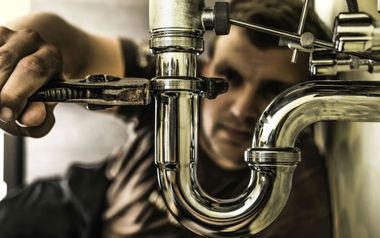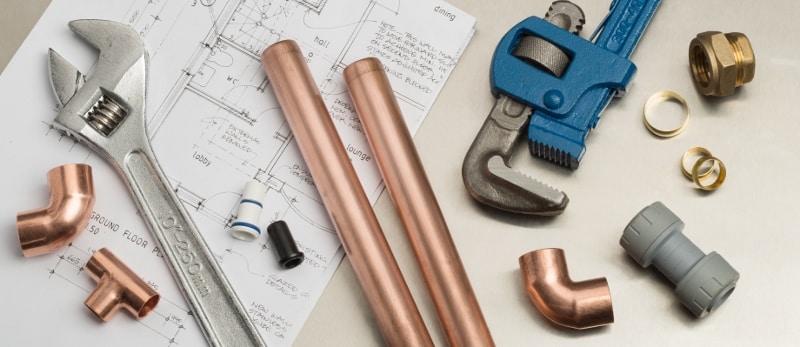Why Your Property's Plumbing System Works: Structure
Why Your Property's Plumbing System Works: Structure
Blog Article
This post down below about Anatomy of a House: Understanding the Components is absolutely intriguing. Don't miss it.

Comprehending exactly how your home's plumbing system works is important for every property owner. From delivering tidy water for alcohol consumption, cooking, and showering to securely eliminating wastewater, a well-maintained pipes system is vital for your household's health and convenience. In this detailed guide, we'll discover the complex network that makes up your home's pipes and deal suggestions on maintenance, upgrades, and dealing with common issues.
Intro
Your home's pipes system is more than just a network of pipes; it's an intricate system that ensures you have access to tidy water and efficient wastewater elimination. Understanding its parts and exactly how they work together can aid you protect against expensive repair work and ensure everything runs efficiently.
Fundamental Components of a Pipes System
Pipelines and Tubing
At the heart of your pipes system are the pipelines and tubing that carry water throughout your home. These can be constructed from different materials such as copper, PVC, or PEX, each with its benefits in regards to resilience and cost-effectiveness.
Fixtures: Sinks, Toilets, Showers, etc.
Components like sinks, bathrooms, showers, and bathtubs are where water is made use of in your home. Understanding just how these fixtures link to the plumbing system aids in identifying problems and intending upgrades.
Valves and Shut-off Factors
Valves control the circulation of water in your plumbing system. Shut-off shutoffs are critical during emergencies or when you require to make repairs, permitting you to isolate parts of the system without interfering with water circulation to the entire residence.
Water System
Main Water Line
The major water line links your home to the municipal water system or a private well. It's where water enters your home and is dispersed to various components.
Water Meter and Pressure Regulatory Authority
The water meter measures your water use, while a stress regulator makes certain that water streams at a secure pressure throughout your home's pipes system, preventing damages to pipes and fixtures.
Cold Water vs. Warm water Lines
Understanding the difference between cold water lines, which supply water straight from the main, and warm water lines, which lug heated water from the hot water heater, helps in fixing and preparing for upgrades.
Drainage System
Drain Pipes Piping and Traps
Drain pipes lug wastewater far from sinks, showers, and bathrooms to the sewage system or septic tank. Traps protect against sewer gases from entering your home and likewise catch debris that might trigger obstructions.
Ventilation Pipelines
Air flow pipes allow air right into the water drainage system, preventing suction that might reduce drainage and create traps to empty. Appropriate air flow is essential for preserving the stability of your pipes system.
Importance of Proper Drain
Making certain proper drainage avoids back-ups and water damages. Regularly cleaning drains and preserving catches can protect against costly repairs and prolong the life of your plumbing system.
Water Heater
Sorts Of Hot Water Heater
Hot water heater can be tankless or traditional tank-style. Tankless heaters warm water on demand, while storage tanks keep warmed water for prompt usage.
Updating Your Pipes System
Factors for Updating
Updating to water-efficient fixtures or replacing old pipes can improve water quality, reduce water bills, and enhance the value of your home.
Modern Plumbing Technologies and Their Benefits
Explore innovations like wise leak detectors, water-saving commodes, and energy-efficient hot water heater that can save money and decrease environmental impact.
Cost Considerations and ROI
Calculate the upfront costs versus long-term savings when considering pipes upgrades. Lots of upgrades pay for themselves with decreased utility bills and less repair services.
Exactly How Water Heaters Link to the Plumbing System
Understanding how hot water heater attach to both the cold water supply and warm water distribution lines helps in diagnosing issues like not enough warm water or leakages.
Maintenance Tips for Water Heaters
Routinely purging your hot water heater to get rid of debris, inspecting the temperature settings, and evaluating for leakages can prolong its lifespan and improve power effectiveness.
Typical Plumbing Concerns
Leakages and Their Causes
Leakages can take place because of aging pipes, loose installations, or high water stress. Dealing with leaks without delay stops water damage and mold and mildew development.
Clogs and Clogs
Blockages in drains and commodes are commonly triggered by flushing non-flushable things or a buildup of oil and hair. Utilizing drain displays and being mindful of what goes down your drains pipes can avoid obstructions.
Indications of Plumbing Troubles to Look For
Low tide pressure, slow drains pipes, foul odors, or unusually high water costs are indications of possible plumbing problems that must be addressed without delay.
Plumbing Upkeep Tips
Routine Examinations and Checks
Arrange yearly plumbing assessments to catch problems early. Look for indications of leaks, rust, or mineral buildup in faucets and showerheads.
Do It Yourself Maintenance Tasks
Straightforward tasks like cleansing faucet aerators, looking for toilet leaks making use of dye tablet computers, or insulating subjected pipes in chilly environments can avoid significant plumbing problems.
When to Call a Specialist Plumbing
Know when a plumbing concern requires expert experience. Attempting intricate repairs without appropriate expertise can lead to more damages and higher repair work costs.
Tips for Minimizing Water Use
Simple routines like dealing with leaks quickly, taking much shorter showers, and running complete loads of laundry and recipes can preserve water and lower your utility expenses.
Eco-Friendly Pipes Options
Consider sustainable pipes products like bamboo for flooring, which is durable and eco-friendly, or recycled glass for counter tops.
Emergency situation Readiness
Steps to Take During a Plumbing Emergency situation
Know where your shut-off shutoffs lie and how to turn off the supply of water in case of a ruptured pipeline or major leakage.
Value of Having Emergency Situation Contacts Handy
Keep get in touch with info for neighborhood plumbings or emergency situation solutions conveniently offered for fast feedback during a plumbing crisis.
Environmental Impact and Conservation
Water-Saving Fixtures and Home Appliances
Setting up low-flow taps, showerheads, and bathrooms can substantially lower water usage without compromising efficiency.
Do It Yourself Emergency Situation Fixes (When Suitable).
Momentary repairs like utilizing air duct tape to spot a dripping pipe or putting a container under a leaking faucet can reduce damage until a professional plumber arrives.
Conclusion.
Understanding the makeup of your home's pipes system encourages you to keep it successfully, saving time and money on repairs. By adhering to normal upkeep routines and staying informed concerning modern-day pipes innovations, you can ensure your plumbing system runs effectively for years to come.
HOW YOUR PLUMBING SYSTEM WORKS
Which Pipes Do What?
Blue lines = fresh water supply entering the building Red lines = hot water supply entering the building Grey lines = pipes carrying waste away from the building and venting pipes carrying gases away from the building (through the roof) YOUR MAIN PLUMBING SYSTEMS
There are two main plumbing systems that support your home s basic plumbing needs one that brings clean water into your home, and one that sends dirty water away from your home. Connected to the toilet, bath, shower, and other faucets in your home, these two systems keep your water flowing in the right directions.
ACCESSING FRESH WATER
Fresh and clean water is brought into your home through the main water supply line . Filtered through one pipe, this water is pressured to flow into the various fixtures in your home at any given time.
This water can be sourced from a well located on your property, a pond or river (mostly cottages), or, as in most cases, from the city s municipal water treatment centre. However, it is important to note that water that is untreated, such as the water siphoned from ponds or rivers, may not be safe to drink. Personal water supplies always need to be treated for hardness and contaminants before consumed.
MUNICIPAL WATER SUPPLIES
Improve taste and odour Remove sediment Eliminate hardness Reduce chlorine COLD WATER SUPPLY VS. HOT WATER SUPPLY
Cold water flows into your home or building through the service line, which then distributes hot or cold water to your fixtures. This line is most commonly run through a central column that runs floor to floor. Hot water runs in short and straight pipes as the longer the pipeline, the more heat that will be lost in the transfer. Having shorter pipes also allows residents to access hot water more quickly.
WASTE WATER SYSTEM
Your wastewater system is divided into two parts pipes that send wastewater away from your home and venting pipes that send sewer gas away from your home. Sewage water travels through pipes that flush the water and waste towards local sewers that are operated and managed by your city or town. Most sewer systems rely on gravity to move the wastewater to where it needs to go.
The further away from your toilet or sink, the larger wastewater pipes become. This allows for waste to be disposed of from various parts of your home or business at once without pipe blockages. The angle and flow of these pipes are also essential for keeping your waste pipes clear of build up.
https://harrisplumbing.ca/how-your-home-plumbing-system-works/

I ran across that content about Anatomy of a House: Understanding the Components while doing a lookup on the web. Enjoyed our post? Please share it. Help another person check it out. Thanks so much for going through it.
Schedule Today! Report this page